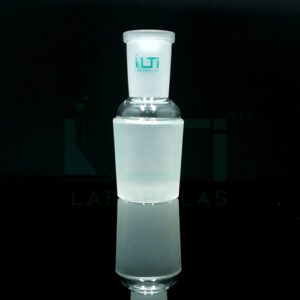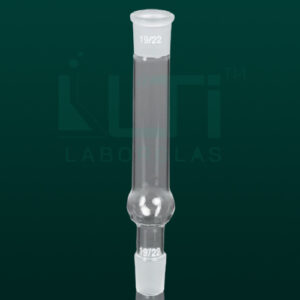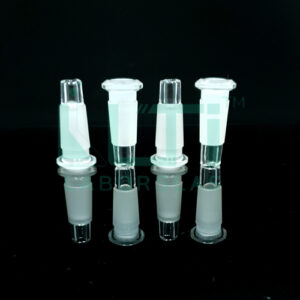Made of Nitrile
| PART No. | Size (mm) | Pack Qty. |
| 8420-S | Small | 50 Pairs |
| 8420-M | Medium | 50 Pairs |
| 8420-L | Large | 50 Pairs |
Here are common uses of laboratory gloves:
- Chemical Handling:
- Applications: Laboratory gloves are used when handling chemicals to protect the hands from direct contact with potentially hazardous substances. Different glove materials offer varying levels of chemical resistance.
- Biological Experiments:
- Applications: In microbiology and biomedical laboratories, gloves are worn to prevent contamination and protect researchers when working with biological materials such as bacteria, viruses, or cell cultures.
- Clinical and Medical Procedures:
- Applications: Healthcare professionals and laboratory technicians wear gloves during medical and clinical procedures to prevent the spread of infections, protect against bodily fluids, and maintain a sterile environment.
- Sample Collection:
- Applications: Gloves are used when collecting and handling samples to ensure that the sample remains uncontaminated and to protect the hands from potential exposure to pathogens or chemicals.
- Pharmaceutical Manufacturing:
- Applications: Gloves are worn in pharmaceutical manufacturing facilities to maintain aseptic conditions and to protect workers from exposure to pharmaceutical ingredients.
- Chemical Analysis and Testing:
- Applications: Laboratory gloves are used during chemical analysis and testing to protect against exposure to reagents, solvents, and other chemicals used in experiments.
- Forensic Investigations:
- Applications: Forensic scientists wear gloves when handling evidence to prevent contamination and to protect themselves from potential biohazards or chemical substances.
- Pathology and Autopsies:
- Applications: Pathologists and technicians wear gloves during autopsies and pathological examinations to protect against contact with bodily fluids and tissues.
- Animal Handling:
- Applications: When working with laboratory animals, researchers wear gloves to protect themselves from bites, scratches, and potential allergens, and to prevent the transfer of human pathogens to the animals.
- DNA and RNA Manipulation:
- Applications: Gloves are used when handling DNA or RNA samples to prevent contamination and to ensure the integrity of genetic material during experiments like polymerase chain reaction (PCR).
- Radiation Protection:
- Applications: In laboratories working with radioactive materials, gloves may be used as an additional protective barrier to minimize skin exposure to radiation.
- Material Handling:
- Applications: When handling abrasive or rough materials, gloves provide protection against cuts, abrasions, and punctures.
- Educational Laboratories:
- Applications: Gloves are commonly used in educational laboratories during experiments to teach students about safety practices and to protect them from potential hazards.
- Cleaning and Decontamination:
- Applications: Gloves are worn during cleaning and decontamination procedures to protect hands from exposure to cleaning agents and disinfectants.
- Nanotechnology and Cleanroom Environments:
- Applications: In nanotechnology research and cleanroom environments, gloves are worn to maintain cleanliness and prevent contamination at the micro or nanoscale.





